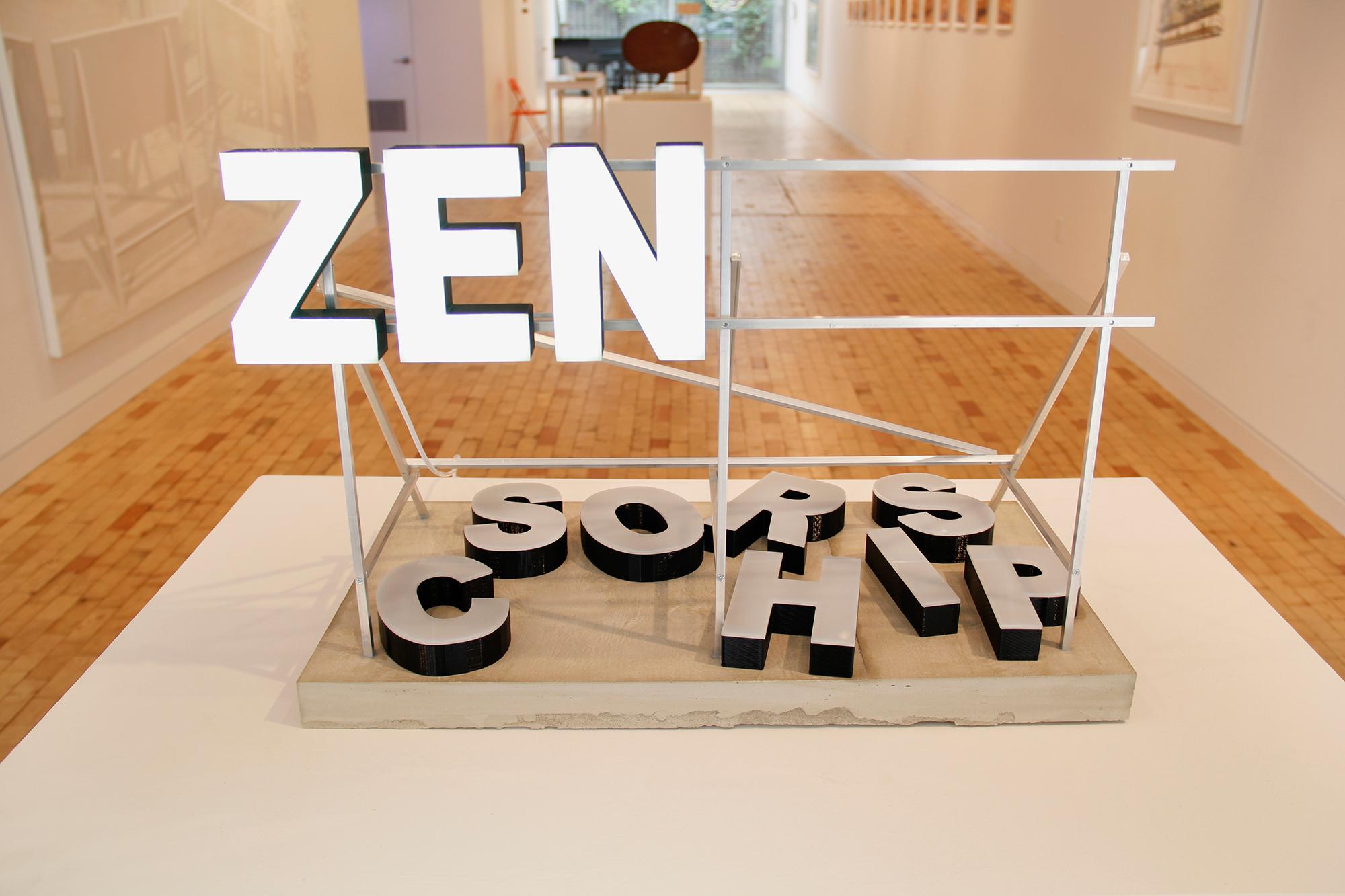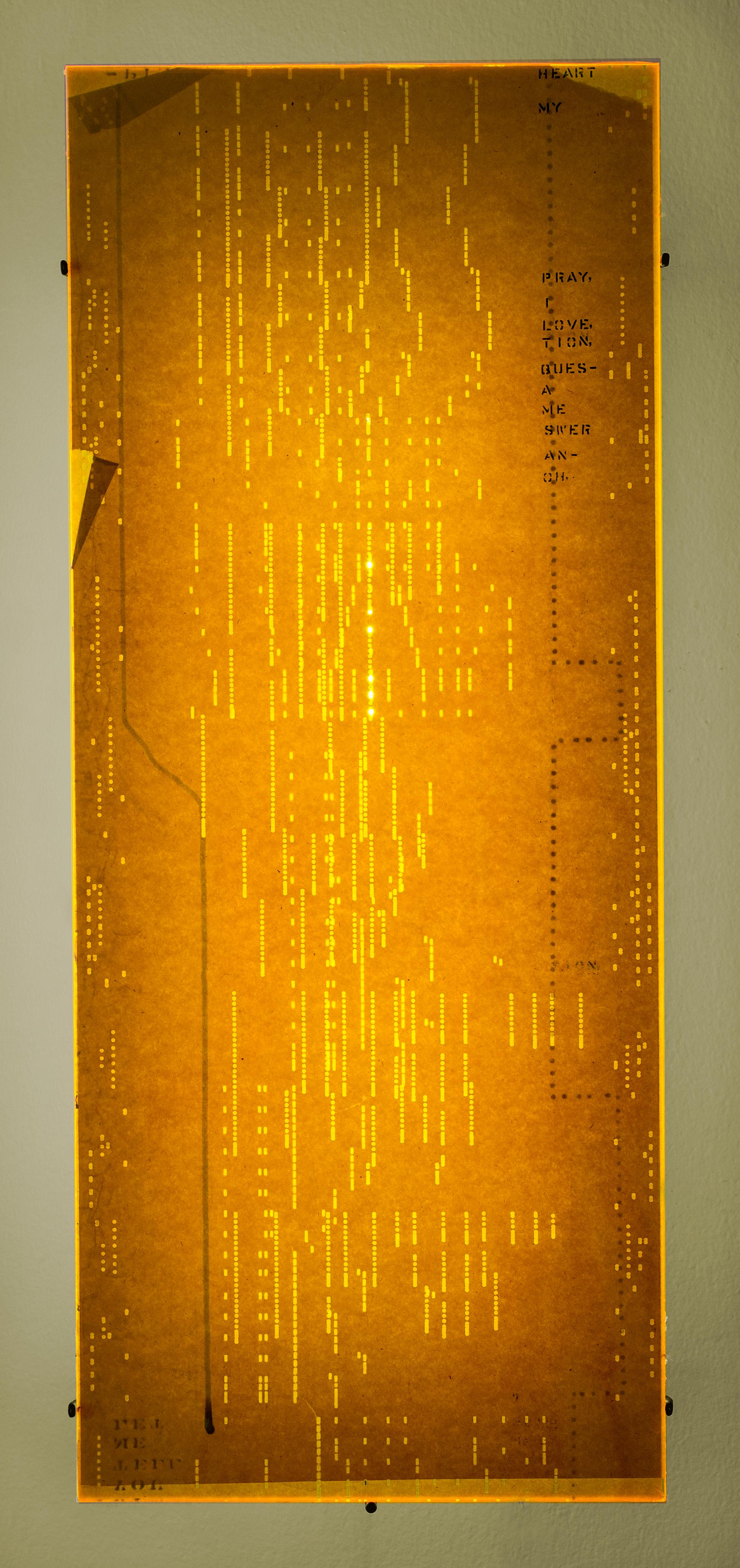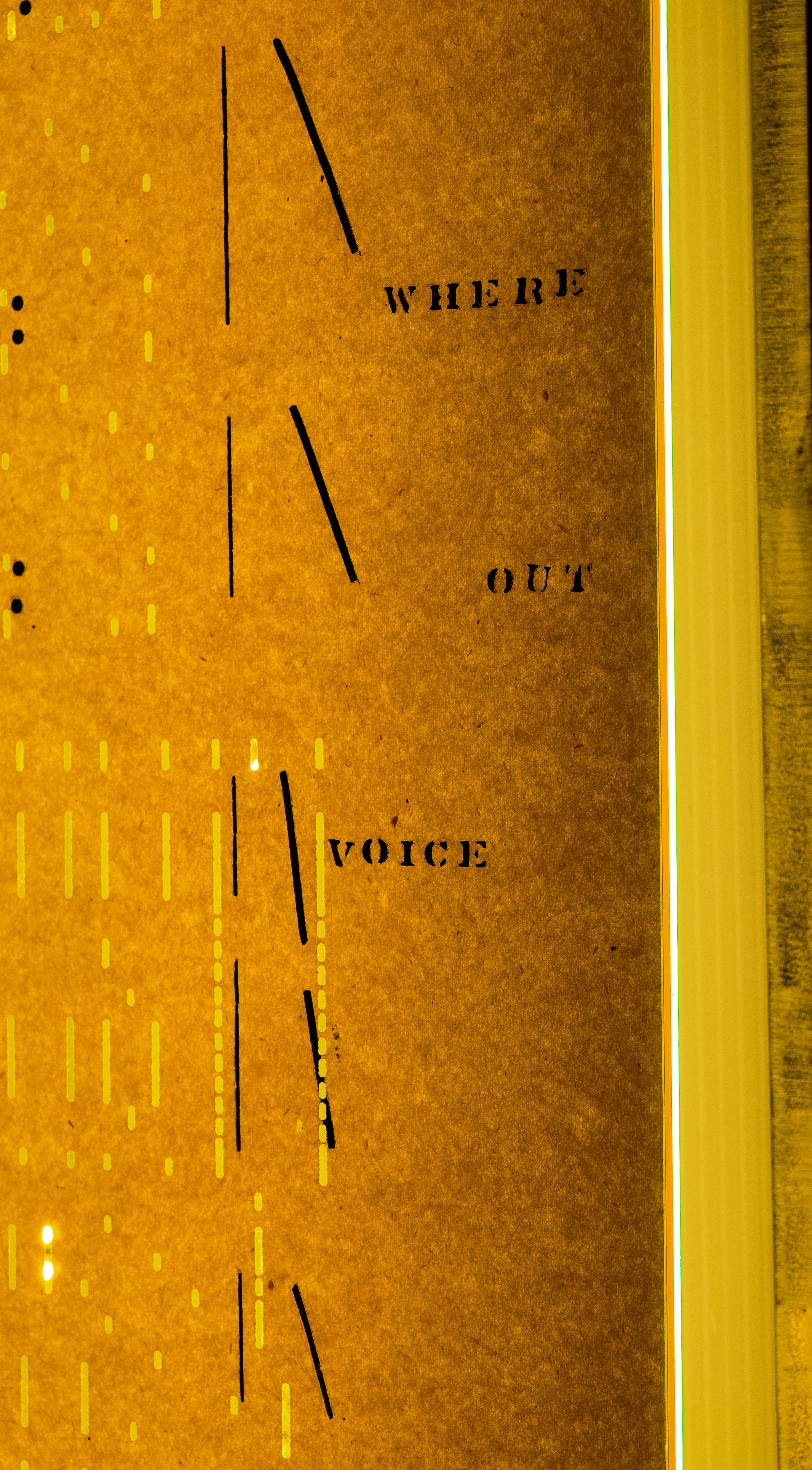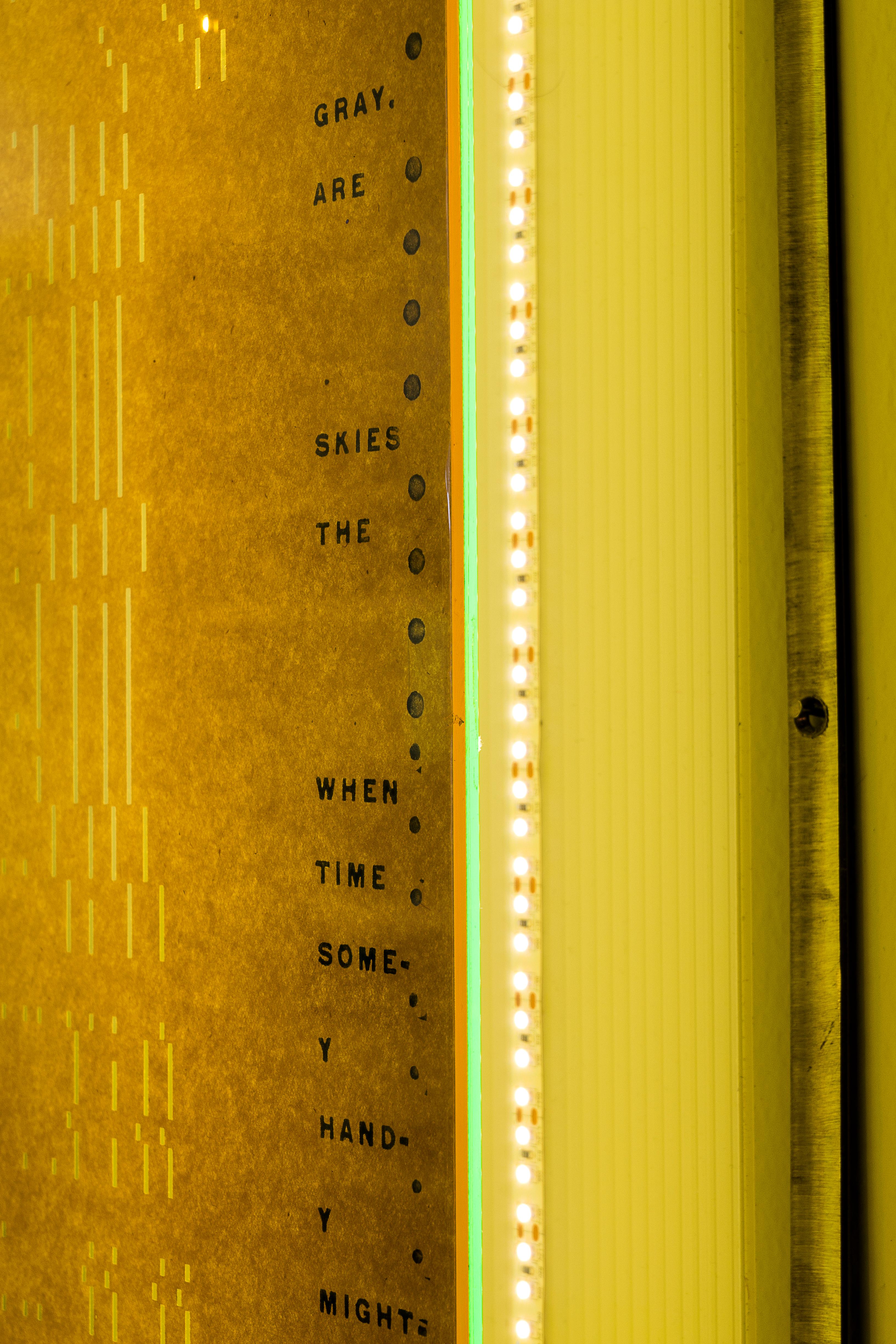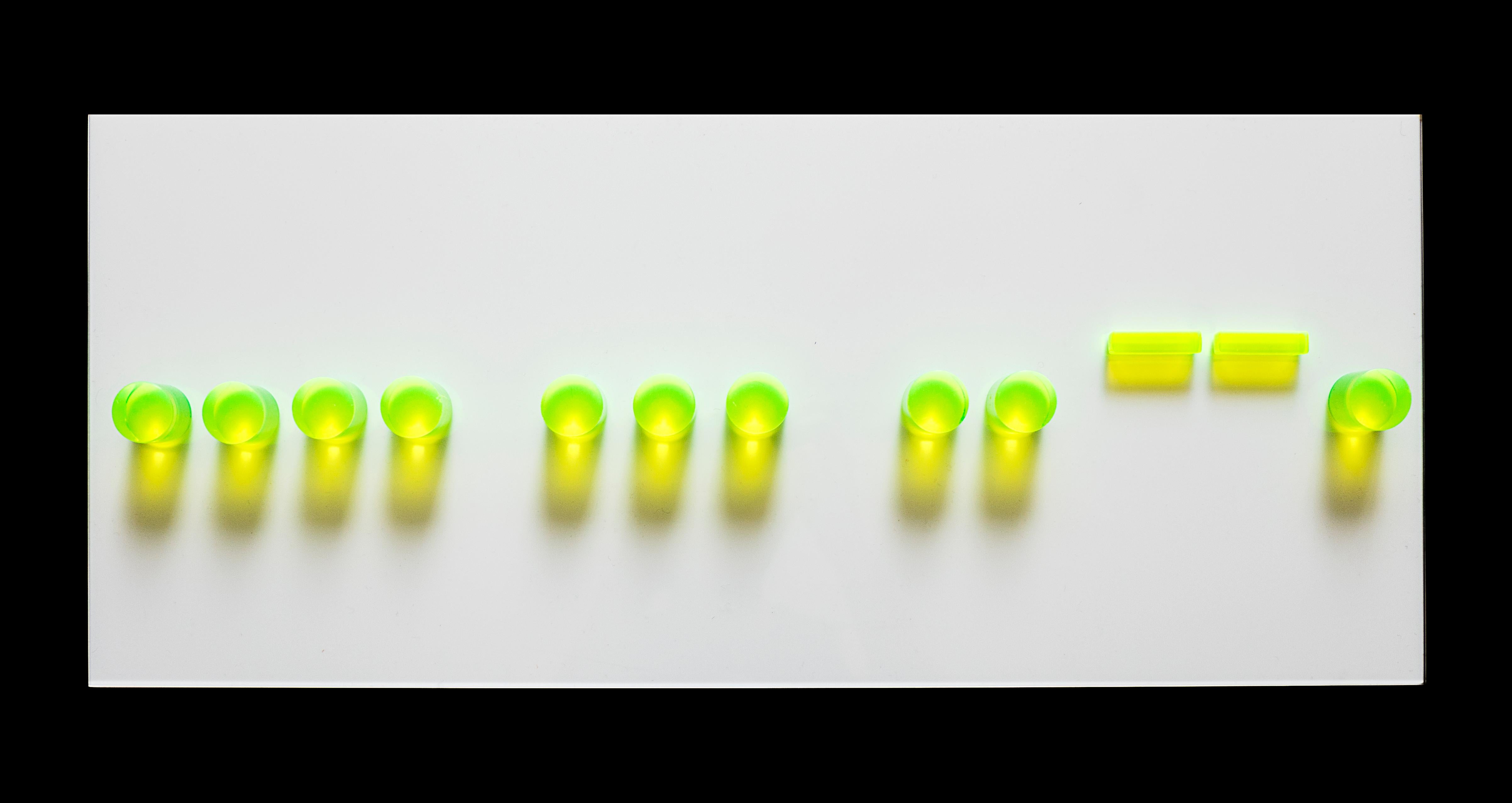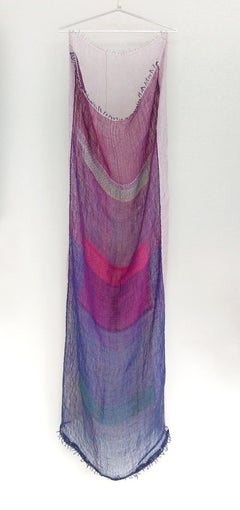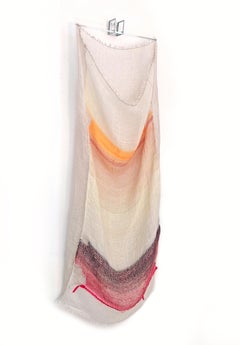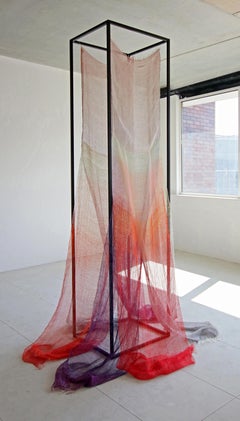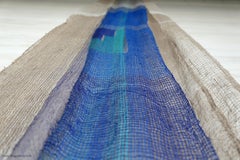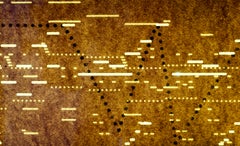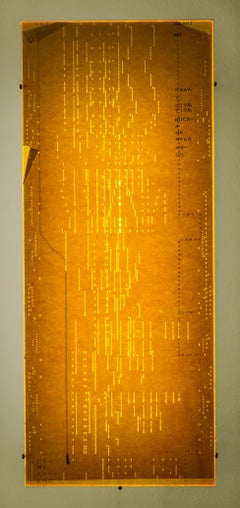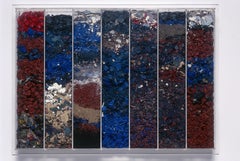
Urns Nr 4/X.93-X.94, a Perspex - Cased Object
View Similar Items
Want more images or videos?
Request additional images or videos from the seller
1 of 5
Krzysztof GliszczyńskiUrns Nr 4/X.93-X.94, a Perspex - Cased Object1994
1994
$1,910.09List Price
About the Item
- Creator:Krzysztof Gliszczyński (1962, Polish)
- Creation Year:1994
- Dimensions:Height: 13 in (33 cm)Width: 18.51 in (47 cm)Depth: 1.58 in (4 cm)
- Medium:
- Movement & Style:
- Period:
- Condition:
- Gallery Location:Salzburg, AT
- Reference Number:1stDibs: LU103538524492
Krzysztof Gliszczyński
Krzysztof Gliszczyński is Professor for painting on Academy of fine arts Gdansk. Krzysztof Gliszczyński born in Miastko in 1962. Graduated from the Gdańsk Academy of Fine Arts in 1987 in the studio of Prof. Kazimierz Ostrowski. Between 1995 and 2002 founder and co-manager of Koło Gallery in Gdańsk. lnitiator of the Kazimierz Ostrowski Award, con-ferred by the Union of Polish Artists and Designers (ZPAP), Gdańsk Chapter. Dean of the Painting Faculty of the Gdańsk Academy of Fine Arts in the years 2008-2012. Vice Rector for Development and Cooperation of the Gdańsk Academy of Fine Arts in the years 2012-2016. Obtained a professorship in 2011. Currently head of the Third Painting Studio of the Painting Faculty of the Gdańsk Academy of Fine Arts. He has taken part in a few dozen exhibitions in Poland and abroad. He has received countless prizes and awards for his artistic work. He is active in the field of painting, drawing, objects, and video.
About the Seller
5.0
Gold Seller
Premium sellers maintaining a 4.3+ rating and 24-hour response times
Established in 2005
1stDibs seller since 2018
151 sales on 1stDibs
Typical response time: 2 hours
Authenticity Guarantee
In the unlikely event there’s an issue with an item’s authenticity, contact us within 1 year for a full refund. DetailsMoney-Back Guarantee
If your item is not as described, is damaged in transit, or does not arrive, contact us within 7 days for a full refund. Details24-Hour Cancellation
You have a 24-hour grace period in which to reconsider your purchase, with no questions asked.Vetted Professional Sellers
Our world-class sellers must adhere to strict standards for service and quality, maintaining the integrity of our listings.Price-Match Guarantee
If you find that a seller listed the same item for a lower price elsewhere, we’ll match it.Trusted Global Delivery
Our best-in-class carrier network provides specialized shipping options worldwide, including custom delivery.More From This Seller
View AllVelvet, Canvas 3D - Contemporary Space Object, Woven Sculptural Artwork
By Marta Pokojowczyk
Located in Salzburg, AT
Canvas 3D ‘Velvet’
2016
Linen yarn, textile stripe, stainless steel hanger; size of the textile: 155 x 64 cm (128 cm circuit),
Canvases 3D are decorative fabrics entirely designed ...
Category
2010s Contemporary Mixed Media
Materials
Stainless Steel
The Way, Canvas 3D - Contemporary Space Object, Woven Sculptural Artwork
By Marta Pokojowczyk
Located in Salzburg, AT
Canvas 3D ‘The Way’ 2016
Linen yarn, textile stripe, stainless steel wall hanger; size of the textile: 134 x 70 cm (140 cm circuit).
Canvases 3D are decorative fabrics entirely desi...
Category
2010s Contemporary Mixed Media
Materials
Stainless Steel
Presence - Handwoven Form 1 , Contemporary Space Object, Sculptural Form
By Marta Pokojowczyk
Located in Salzburg, AT
„Presence” 2018
Pair of twin handwoven textiles, linen yarn, acrylic textile paint, aluminum construction; textiles: 310 x 67 cm; aluminum construction: 255 x 65 x 55 cm.
The object...
Category
2010s Contemporary Abstract Sculptures
Materials
Metal
Untitled, Series "The Way" - Handwoven Linen Textile - Very Lang Wall Object
By Marta Pokojowczyk
Located in Salzburg, AT
Untitled, Series "The Way" - Handwoven Linen and reflective yarn textile, 470 x 70 cm, 2014 - Contemporary Wall Object , Very Long Format
This Object is entirely constructed on a w...
Category
2010s Contemporary Abstract Sculptures
Materials
Textile, Linen, Yarn
Abstraction Male - Unique Handmade Modern Glazed Ceramics Wall Sculpture
By Monika Zadurska-Bielak
Located in Salzburg, AT
Weigt of the sculpture 2,15 kg
Monika Zadurska-Bielak, Graduated from the studio of Prof. Franciszek Duszeńko at the Faculty of Sculpture of the Acade...
Category
2010s Contemporary Abstract Sculptures
Materials
Ceramic
Caput Mortuum - Conceptual Encaustic Oil Painting, Marble Dust Ash On Canvas XXL
By Krzysztof Gliszczyński
Located in Salzburg, AT
Overall Size: Height 200cm x Width 300cm ( The painting consists of 2 parts, one part: 200x150cm )
Overall Size: Height 78,7402 Inch x Width 118,11 Inch ( The painting consists o...
Category
1990s Conceptual Abstract Paintings
Materials
Marble
You May Also Like
Illumination, 2018 LED Sculpture
Located in Brooklyn, NY
JORGE WELLESELEY From the series: Subterfuges, ”Illumination”, 2018
Aluminum, LED, plexiglass, PLA, concrete 15.5 x 23.5 x 12 in Ed: 2/3 + 1AP
Jorge Wellesley (Havana, 1979) Cuban...
Category
2010s Conceptual Abstract Sculptures
Materials
Concrete, Metal
Jo Yarrington, Mute-Ability_Composition 3, 2019_acrylic, steel, player piano rol
By Jo Yarrington
Located in Darien, CT
Jo Yarrington’s photographs, prints, works on paper, glass sculptures and architecturally-based installations have been shown in exhibitions at the Aldrich Contemporary Art Museum, Y...
Category
2010s Conceptual Abstract Sculptures
Materials
Steel
Jo Yarrington, Mute-Ability_Composition 1, 2019_acrylic, steel, player piano rol
By Jo Yarrington
Located in Darien, CT
Jo Yarrington’s photographs, prints, works on paper, glass sculptures and architecturally-based installations have been shown in exhibitions at the Aldrich Contemporary Art Museum, Yale University, Cornell University, the Museum of Glass, the DeCordova Museum and Sculpture Park, Artists Space, St. John the Divine Cathedral, Grounds for Sculpture, the Museum of American Glass and ODETTA, among others.
International exhibitions have included Guangzhou Academy of Fine Arts Museum, Glasgow School of Art, Glasgow Cathedral, Glasgow University, Galeria Sala Uno and Centro de las Artes de Guanajuato. She represented the United States at the Sharjah Biennial, United Arab Emirates and participated in the Berlin Biennial. in 2010 she received the Bronze Prize, the Museum of Contemporary Art, Skopje, Macedonia.
Yarrington is a recipient of artist grants and Fellowships from the Pollock Krasner Foundation, the New York Foundation for the Arts, the Pennsylvania Council on the Arts and the Connecticut Commission on Culture and Tourism. She has received Residency Fellowships from the MacDowell Colony, the Museum of Glass, the Museum of American Glass, the Bridge Virtual Residency/ SciArt Center, the Lucile Walton Fellow/Mountain Lake Biological Station, the Virginia Center for Creative Arts, the Anderson Center and the Ucross Foundation, among others.
International grants and fellowships have included the Banff Center for Arts and Creativity/Canada, SIMS Residency/ Iceland, Cill Rialaig Artists Residency/Ireland, the Burren College of Art Residency/Ireland and the American Scandinavian Foundation. She is a Professor of Visual and Performing Arts at Fairfield University and lives and works in New York City.
STATEMENT
In site-specific exhibitions, public art commissions, collaborative and individual projects Jo Yarrington has used varied combinations of glass, waxed surfaces, found artifacts and experimental analog photography to investigate the way we perceive – searching for, experimenting with and developing throughout a sensory-based vernacular. Her mostly translucent materials function as physical framework and symbolic membrane. Light, both natural and ambient, provides a kinetic or time-based element to her work. Scale and the integration of architecture are also pivotal components.
In the 6-part installation for the two-person exhibition Illuminated, Yarrington continues her interest in the connections between vision, sound and language. In Mute-ability: Compositions 1 – 6, her title for this light-based comprehensive work, she combines the words mute and malleability. The work focuses on found piano rolls, a music storage medium, originally conceived as coded notations or ‘note control data’ for music produced in pneumatic player pianos...
Category
2010s Conceptual Abstract Sculptures
Materials
Steel
Jo Yarrington, Mute-Ability_Composition 4, 2019_acrylic, steel, player piano rol
By Jo Yarrington
Located in Darien, CT
Jo Yarrington’s photographs, prints, works on paper, glass sculptures and architecturally-based installations have been shown in exhibitions at the Aldrich Contemporary Art Museum, Yale University, Cornell University, the Museum of Glass, the DeCordova Museum and Sculpture Park, Artists Space, St. John the Divine Cathedral, Grounds for Sculpture, the Museum of American Glass and ODETTA, among others.
International exhibitions have included Guangzhou Academy of Fine Arts Museum, Glasgow School of Art, Glasgow Cathedral, Glasgow University, Galeria Sala Uno and Centro de las Artes de Guanajuato. She represented the United States at the Sharjah Biennial, United Arab Emirates and participated in the Berlin Biennial. in 2010 she received the Bronze Prize, the Museum of Contemporary Art, Skopje, Macedonia.
Yarrington is a recipient of artist grants and Fellowships from the Pollock Krasner Foundation, the New York Foundation for the Arts, the Pennsylvania Council on the Arts and the Connecticut Commission on Culture and Tourism. She has received Residency Fellowships from the MacDowell Colony, the Museum of Glass, the Museum of American Glass, the Bridge Virtual Residency/ SciArt Center, the Lucile Walton Fellow/Mountain Lake Biological Station, the Virginia Center for Creative Arts, the Anderson Center and the Ucross Foundation, among others.
International grants and fellowships have included the Banff Center for Arts and Creativity/Canada, SIMS Residency/ Iceland, Cill Rialaig Artists Residency/Ireland, the Burren College of Art Residency/Ireland and the American Scandinavian Foundation. She is a Professor of Visual and Performing Arts at Fairfield University and lives and works in New York City.
STATEMENT
In site-specific exhibitions, public art commissions, collaborative and individual projects Jo Yarrington has used varied combinations of glass, waxed surfaces, found artifacts and experimental analog photography to investigate the way we perceive – searching for, experimenting with and developing throughout a sensory-based vernacular. Her mostly translucent materials function as physical framework and symbolic membrane. Light, both natural and ambient, provides a kinetic or time-based element to her work. Scale and the integration of architecture are also pivotal components.
In the 6-part installation for the two-person exhibition Illuminated, Yarrington continues her interest in the connections between vision, sound and language. In Mute-ability: Compositions 1 – 6, her title for this light-based comprehensive work, she combines the words mute and malleability. The work focuses on found piano rolls, a music storage medium, originally conceived as coded notations or ‘note control data’ for music produced in pneumatic player pianos...
Category
2010s Conceptual Abstract Sculptures
Materials
Steel
Jo Yarrington, Mute-Ability_Composition 6, 2019_acrylic, steel, player piano rol
By Jo Yarrington
Located in Darien, CT
Jo Yarrington’s photographs, prints, works on paper, glass sculptures and architecturally-based installations have been shown in exhibitions at the Aldrich Contemporary Art Museum, Yale University, Cornell University, the Museum of Glass, the DeCordova Museum and Sculpture Park, Artists Space, St. John the Divine Cathedral, Grounds for Sculpture, the Museum of American Glass and ODETTA, among others.
International exhibitions have included Guangzhou Academy of Fine Arts Museum, Glasgow School of Art, Glasgow Cathedral, Glasgow University, Galeria Sala Uno and Centro de las Artes de Guanajuato. She represented the United States at the Sharjah Biennial, United Arab Emirates and participated in the Berlin Biennial. in 2010 she received the Bronze Prize, the Museum of Contemporary Art, Skopje, Macedonia.
Yarrington is a recipient of artist grants and Fellowships from the Pollock Krasner Foundation, the New York Foundation for the Arts, the Pennsylvania Council on the Arts and the Connecticut Commission on Culture and Tourism. She has received Residency Fellowships from the MacDowell Colony, the Museum of Glass, the Museum of American Glass, the Bridge Virtual Residency/ SciArt Center, the Lucile Walton Fellow/Mountain Lake Biological Station, the Virginia Center for Creative Arts, the Anderson Center and the Ucross Foundation, among others.
International grants and fellowships have included the Banff Center for Arts and Creativity/Canada, SIMS Residency/ Iceland, Cill Rialaig Artists Residency/Ireland, the Burren College of Art Residency/Ireland and the American Scandinavian Foundation. She is a Professor of Visual and Performing Arts at Fairfield University and lives and works in New York City.
STATEMENT
In site-specific exhibitions, public art commissions, collaborative and individual projects Jo Yarrington has used varied combinations of glass, waxed surfaces, found artifacts and experimental analog photography to investigate the way we perceive – searching for, experimenting with and developing throughout a sensory-based vernacular. Her mostly translucent materials function as physical framework and symbolic membrane. Light, both natural and ambient, provides a kinetic or time-based element to her work. Scale and the integration of architecture are also pivotal components.
In the 6-part installation for the two-person exhibition Illuminated, Yarrington continues her interest in the connections between vision, sound and language. In Mute-ability: Compositions 1 – 6, her title for this light-based comprehensive work, she combines the words mute and malleability. The work focuses on found piano rolls, a music storage medium, originally conceived as coded notations or ‘note control data’ for music produced in pneumatic player pianos...
Category
2010s Conceptual Abstract Sculptures
Materials
Steel
Jo Yarrington, Mute-Ability_Composition 2, 2019_acrylic, steel, player piano rol
By Jo Yarrington
Located in Darien, CT
Jo Yarrington’s photographs, prints, works on paper, glass sculptures and architecturally-based installations have been shown in exhibitions at the Aldrich Contemporary Art Museum, Yale University, Cornell University, the Museum of Glass, the DeCordova Museum and Sculpture Park, Artists Space, St. John the Divine Cathedral, Grounds for Sculpture, the Museum of American Glass and ODETTA, among others.
International exhibitions have included Guangzhou Academy of Fine Arts Museum, Glasgow School of Art, Glasgow Cathedral, Glasgow University, Galeria Sala Uno and Centro de las Artes de Guanajuato. She represented the United States at the Sharjah Biennial, United Arab Emirates and participated in the Berlin Biennial. in 2010 she received the Bronze Prize, the Museum of Contemporary Art, Skopje, Macedonia.
Yarrington is a recipient of artist grants and Fellowships from the Pollock Krasner Foundation, the New York Foundation for the Arts, the Pennsylvania Council on the Arts and the Connecticut Commission on Culture and Tourism. She has received Residency Fellowships from the MacDowell Colony, the Museum of Glass, the Museum of American Glass, the Bridge Virtual Residency/ SciArt Center, the Lucile Walton Fellow/Mountain Lake Biological Station, the Virginia Center for Creative Arts, the Anderson Center and the Ucross Foundation, among others.
International grants and fellowships have included the Banff Center for Arts and Creativity/Canada, SIMS Residency/ Iceland, Cill Rialaig Artists Residency/Ireland, the Burren College of Art Residency/Ireland and the American Scandinavian Foundation. She is a Professor of Visual and Performing Arts at Fairfield University and lives and works in New York City.
STATEMENT
In site-specific exhibitions, public art commissions, collaborative and individual projects Jo Yarrington has used varied combinations of glass, waxed surfaces, found artifacts and experimental analog photography to investigate the way we perceive – searching for, experimenting with and developing throughout a sensory-based vernacular. Her mostly translucent materials function as physical framework and symbolic membrane. Light, both natural and ambient, provides a kinetic or time-based element to her work. Scale and the integration of architecture are also pivotal components.
In the 6-part installation for the two-person exhibition Illuminated, Yarrington continues her interest in the connections between vision, sound and language. In Mute-ability: Compositions 1 – 6, her title for this light-based comprehensive work, she combines the words mute and malleability. The work focuses on found piano rolls, a music storage medium, originally conceived as coded notations or ‘note control data’ for music produced in pneumatic player pianos...
Category
2010s Conceptual Abstract Sculptures
Materials
Steel
